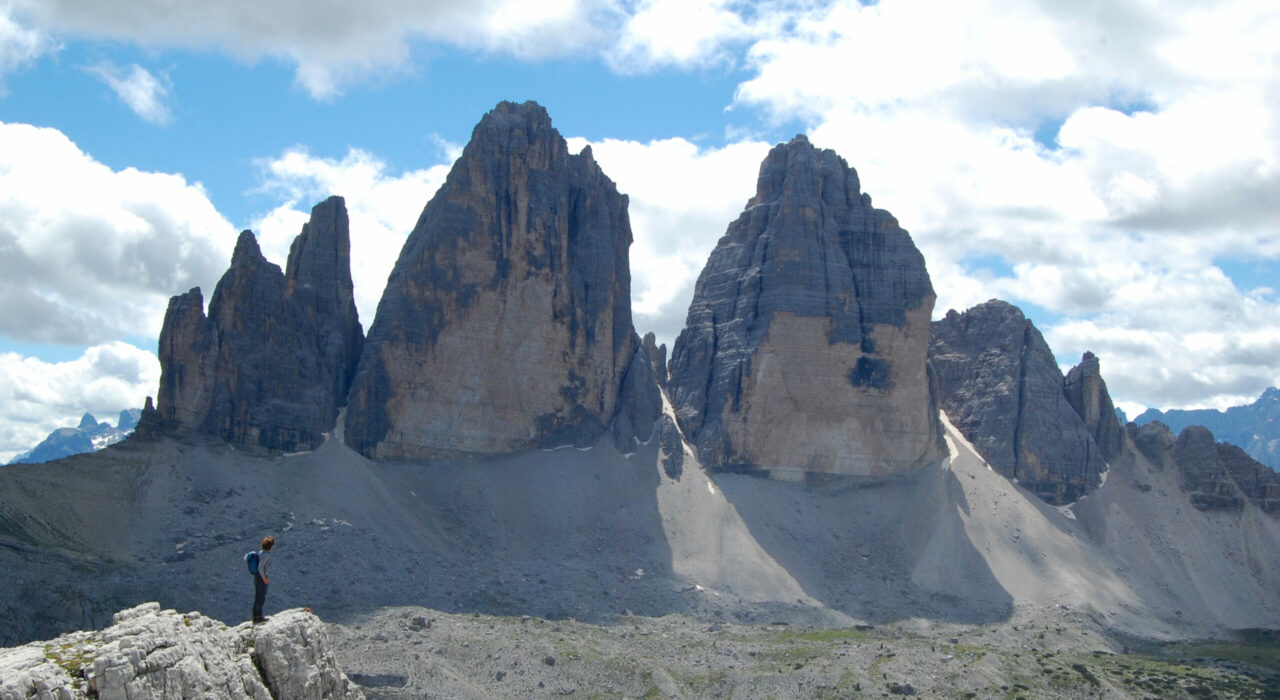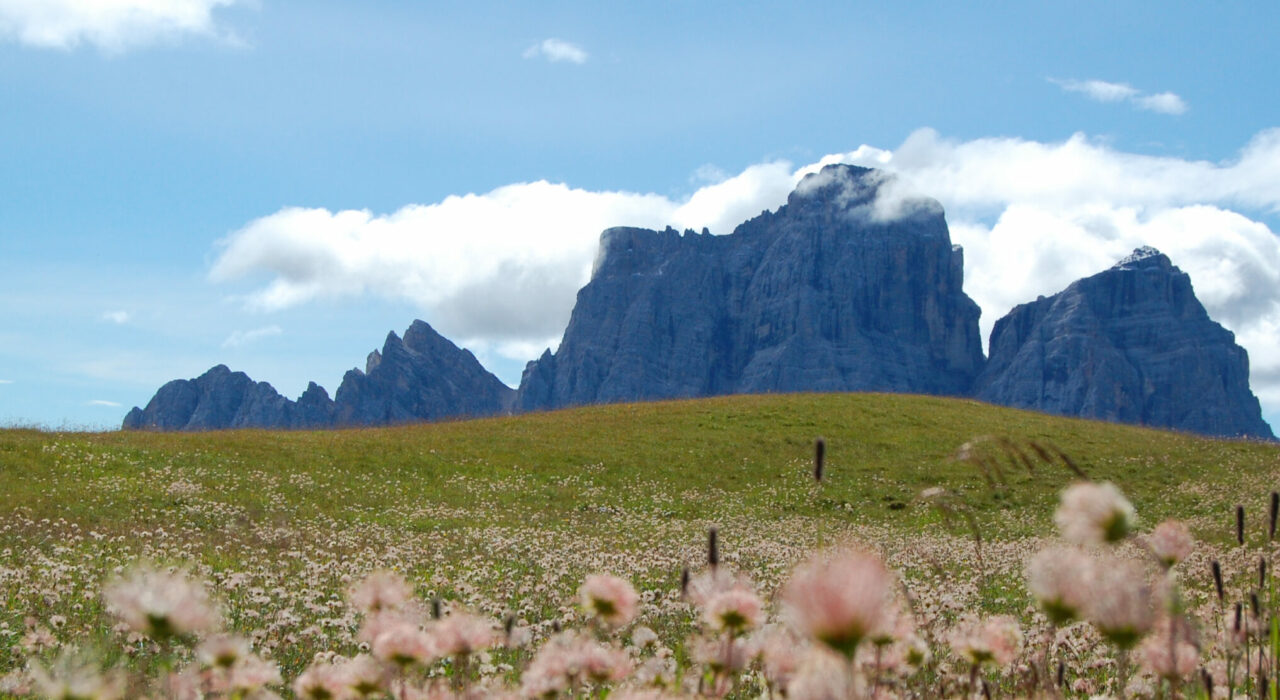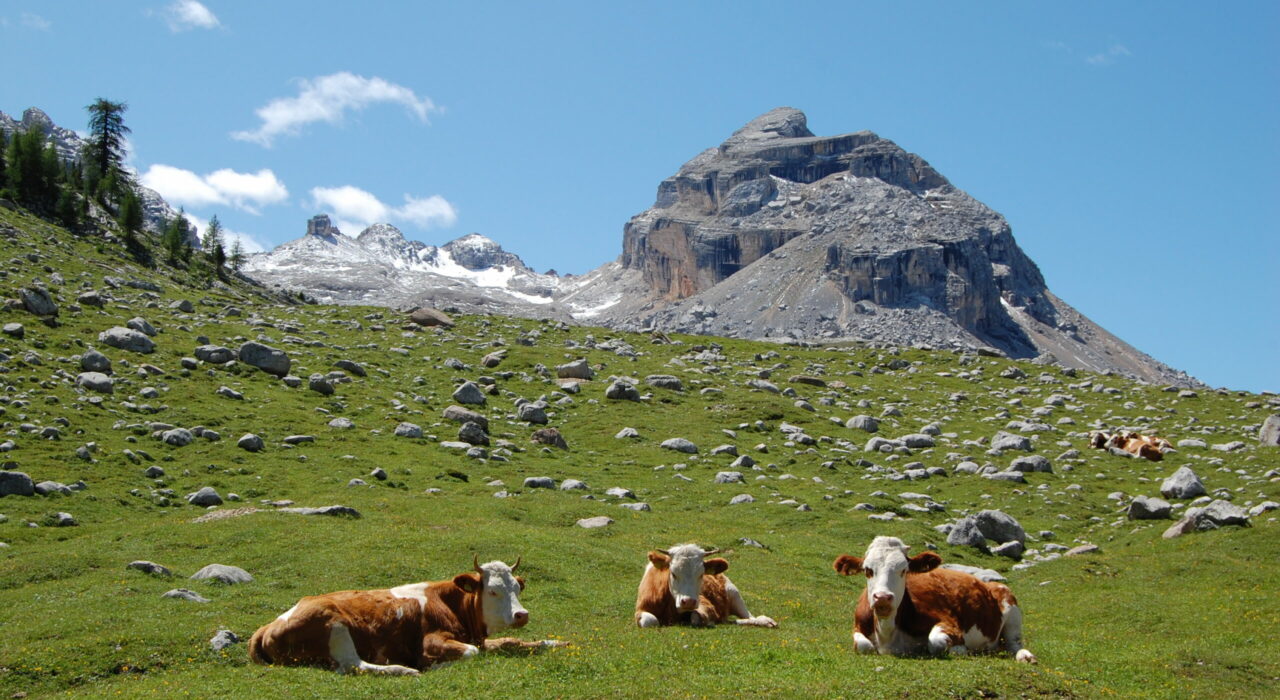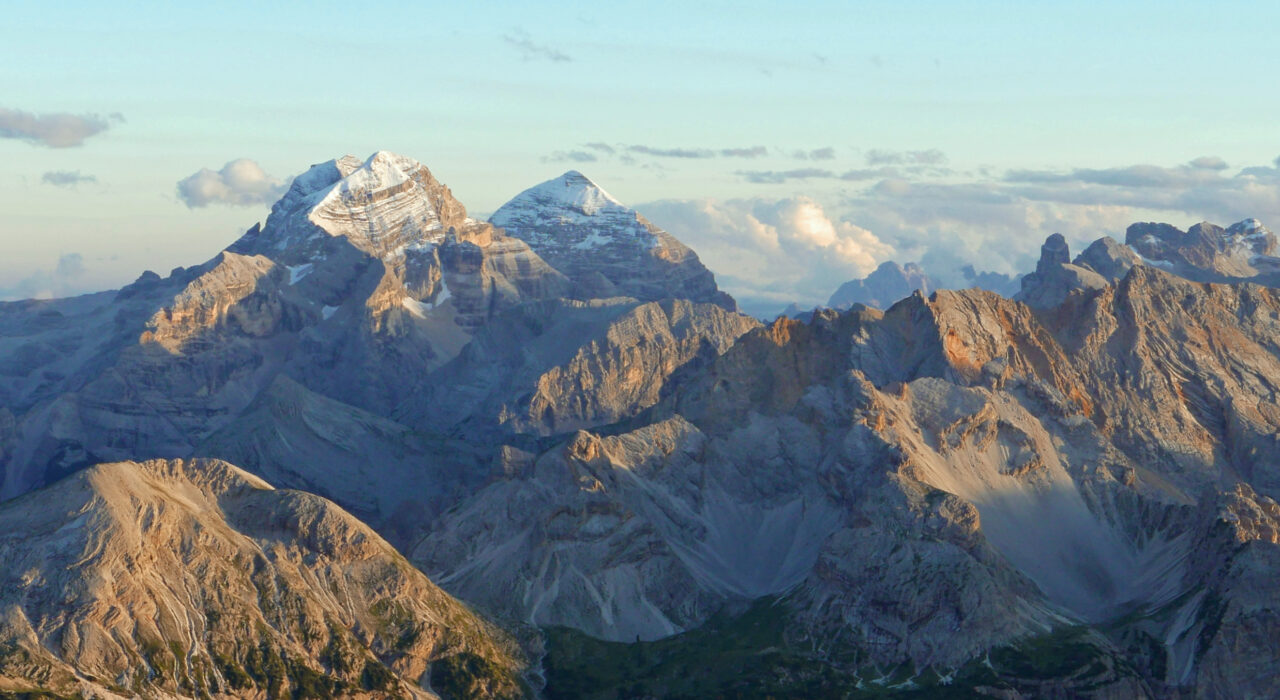The Dolomites
On 26 June 2009 the Dolomites were added to the UNESCO World Heritage List not only for their beauty and the uniqueness of their landscape, but also for their scientific relevance at a geological and geomorphological level. The Dolomites are divided into 9 areas of which the largest, known as the “Northern Dolomites”, includes the Natural Parks of the Ampezzo Dolomites, of Fanes – Senes – Braies and the Tre Cime Park.
The “Dolomite landscape” is characterized by a vast array of shapes and colors. The soft strips of green woods and prairies are in contrast with vertical rocky walls enriched with spiers, towers, forks, gullies and with glacial cirques, plateaus and deep canyons.
The rocks of these mountains date back to the Triassic period (about 250 million years ago) and were formed by the accumulation of algae, sponges, shells, corals and other marine organisms in an area with a very different latitude and longitude from the present one, where warm and shallow seas existed. These sediments, transformed into rock, rose due to the collision between the European and African plates. Finally, atmospheric agents such as the immense glaciers of the ice ages in particular but also rain, wind and gravity helped shape what we see today.
Scientists find in the Dolomites very important evidence regarding the evolutionary periods of the earth’s history, in particular the interval between the Upper Permian and the Cretaceous periods (between 270 and 120 million years ago). In the landscapes of these mountains you can admire ancient fossil cliffs and various tropical environments dating back to the Mesozoic period, in addition to evidence of strong volcanic activity and important mass extinctions. Here you can walk, without realizing it, on an ancient island or a lagoon, or go down a slope that was once submerged in the deepest sea.
The Dolomites owe their name to the French naturalist Déodat de Dolomieu (1750-1801) who was the first to notice the uniqueness of the rocks predominant in this region. The new mineral was thus called “dolomite” (double carbonate of calcium and magnesium). Years later, some English climbers referred to them as “Dolomite Mountains” and finally the name Dolomites was coined.Due to their particular chemical composition, these rocks establish a special bond with sunlight. At dawn and dusk they take on hues that vary from gold to pink to orange. This particular phenomenon is called “enrosadira”, from the ladin term literally meaning “turning pink” (ladin is the ancient language of the inhabitants of the Dolomites).
In bright sunshine, however, the Dolomites appear very light, and in popular tradition they are known as the “Pale Mountains”.
“Come closer, please, and look closely at this wonder, without a doubt one of the most beautiful, powerful and extraordinary things on this planet… Are they rocks or clouds? Are they real or is it a dream? “
Dino Buzzati, Le montagne di vetro, 1956





